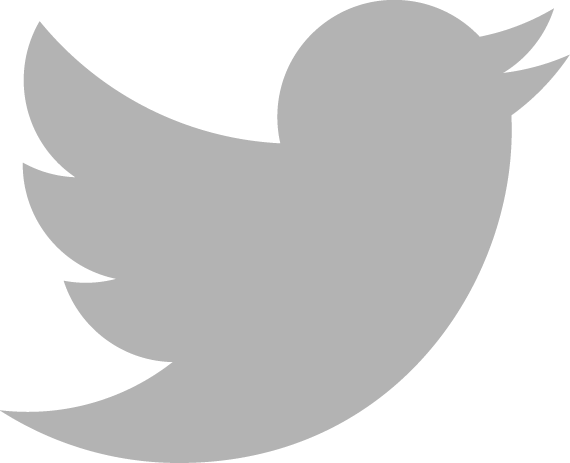by Rob Goodman.
Entrepreneurs and startups often lack a simple playbook for what it takes to develop an impactful brand. So last month, when I had the privilege of moderating a panel at Uncharted Minds’s first Design Gurus Summit, I picked the brains of some top brand-focused designers and founders to get to the heart of what it takes to build a meaningful brand in the 21st century. The conversation was filled with valuable insights from Tim Brown, Co-Founder of Allbirds, Trevor Hubbard, Partner and Executive Creative Director at Butchershop, Jason Mamaril, UI Designer at Airbnb, Emma Sherwood-Forbes, Product Design Consultant, and Joshua Taylor, Design Director at Walnut and White.
Here are five key lessons drawn from the discussion with this all-star group that startups can run with today as they discover the differentiating ingredients that can lead to long-lasting brand success.
Lesson #1
Your Company Is Your Brand
“Brand isn’t just a 100-page PDF that an agency draws up for you—it’s the culture, the people working for you, everything down to how the offices are decorated and the furniture is chosen,” said Tim Brown. The former FIFA World Cup Soccer Champion recently launched Allbirds, a company dedicated to creating, as Time magazine called it, “the most comfortable shoes in the world.” Tim has been committed to brand from day one, and building advocates within the organization has been key to his early success and philosophy.
“We started the Allbirds brand from scratch, and we began by thinking about it from the perspective of a new hire and the impression we wanted to make on that person. What happens when that person first enters in the door? What does the brand look like to them? Where do you take job candidates out for lunch? Thinking about brand that deeply, across all aspects of our business—I think that’s when it starts to get really interesting, and that’s the opportunity to really make it shine.”
Butchershop’s Trevor Hubbard, who has helped shaped the brand destinies of the San Francisco Giants, Google, Vodafone, Zuora, and many more, agrees. “I feel like there are so many brand expressions that happen externally that we often forget the internal part. Ultimately, brands are as much about the internal culture as they are about outbound communications. If you have a culture, you can carry that torch outwardly, and everybody you employ can be a champion for your brand.”
Lesson #2
Product and Brand Should Be Besties
As a startup, you can spend all the time in the world getting your messaging right, working up brilliant marketing creative, and courting influencers with hysterical snaps––but when a user first lands on your app’s home screen, the experience better be on point.
A product designer with a passion for making the user and brand experiences two halves of a whole, Emma Sherwood-Forbes most recently consulted at Cooper and taught at General Assembly. She had this to say about brand from the product perspective: “Brand can be a powerful platform that can ultimately drive product decisions and move the user experience forward. But defining how the principles of brand distill into the product through specific user experiences remains one of our greatest challenges.”
At Airbnb, UI designer Jason Mamaril works on a collaborative team within the product organization that unites experience and brand. “We’re called EPIC, which stands for Experience & Production Designers, Insights, and Content. We all live under the product umbrella, but part of our research work is to understand how users’ interactions and sentiments will be affected by their perception of our brand.”
Whether your organization has formal team structures or you simply want to get some valuable cross-talk going between colleagues, this kind of multidisciplined group can help elevate your game when it comes to capturing meaningful brand initiatives across product and user experiences. As Trevor Hubbard said, “Ultimately, it’s about how you want people to feel, what you want them to do, how you want them to remember you, and the relationships you want to develop.” And those are fundamental markers every company can rally around when it comes to both product and brand.
Lesson #3
Sprint to Success
When a company is thinking about developing their brand, they usually evaluate large agency proposals—with months of discovery and tens (or hundreds) of thousands of dollars invested—that will help them define who they are and give them the tools to communicate this vision to their potential customers and employees. But in the let’s-start-running-from-day-one mentality of Silicon Valley, startups often feel these kinds of exercises can’t keep pace with their need for big, immediate gains.
Joshua Taylor has transformed the product sprint into a brand exercise, which gives startups the building blocks of a brand in a single week. He said, “We deliver logos, colors systems, and a fundamental platform that’s a really minimal yet effective jumping off point for startups.” Though all this work comes in about a week, don’t be fooled––it’s actually the existing relationship and product development work that Josh does with teams beforehand that makes these brand sprints a viable reality.
“We do this only after we’ve already spent a good amount of time working with the team to stand up the product,” he added. “So by the time we do the sprint, all the discovery work has been baked into our product development process along the way.”
Your brand will inevitably evolve, but even startups with very little money have to begin somewhere. And sprinting to establish your baseline brand values and platform can be a great way to kickstart the process.
Lesson #4
Be Prepared to Hear from the Masses
There was once a time when user feedback had to be actively sought out through surveys, email blasts, and in-person focus groups. That’s no longer the case. Today all you have to do is listen as people shout about your brand on Facebook, in Reddit forums, on Product Hunt, and in unsolicited tweetstorms. But what’s a startup to do with all that noise? Take the good with the bad, and plan ahead.
Airbnb famously relaunched their brand nearly two years ago with a new logo mark, dubbed the “Belo,” that has a curvaceous look that many compared to any number of body parts. Jason Mamaril joined Airbnb just as the new brand was launching and was tasked with bringing it into the product experience. “When I was first brought on and looked at the new logo, I knew that it could be misunderstood and compared to any number of things. But the team had already had deep conversations around the new look, and in our research leading up to the launch, we got all kinds of feedback. So when we went live, the reactions on social media weren’t surprising. We were ready for it, and we took it all in good fun.”
So much so, that Airbnb decided to include a blush-inducing wink in their email announcement to the design community. Jason said, “I had the team draft the email with the top half of our new logo cut off with the headline ‘We’ll show you ours…’ There is a certain level of humility in our brand, and we felt it was important to exhibit good humor in playing to people’s initial reaction to the logo. At the end of the day it was about servicing our community and making sure it was a mark they could be excited and proud about embracing. And they absolutely have.”
“When you think about what we created,“ he concluded, “it’s a visual mark that is meant to signify the universal sign for belonging, and it transcends language and culture. Which, in the end, aligns wholeheartedly with Airbnb’s core values.”
Whether you are releasing a new logo, updating your branding, or reworking your product experience, you can count on the fact that you won’t be able to please everyone all the time, and backlash in some form should be expected. But if you are true to your brand values and execute well against them, you’ll be prepared to stand by those challengers and ultimately thrive with your new users and your broader community. And remember, strong reactions are better than no reaction and can sometimes be even better than all positive feedback. If everyone loves it, either some people are keeping quiet or you’ve created the brand equivalent of vanilla ice cream––which everyone likes, but no one really goes crazy for.
Lesson #5
Fads They Come, Fads They Go*
From VR to bots and the IoT––shiny new opportunities are constantly emerging. While some platforms will be right for your brand, others simply won’t align to your goals and identity. Joshua Taylor from Walnut and White shared this piece of advice: “It’s crucial for brands and marketing directors to think through where and how their message should be told on new platforms.”
Emma Sherwood-Forbes added, “You’ve got to be true to who you are. Let’s take a newer platform like Snapchat, where suddenly a company that has a long-standing reputation as trustworthy, calm, or mature is now adopting a crazy, spontaneous persona and using glitter in every post––it just doesn’t make sense. When companies adapt to new platforms, they should do it in an authentic way, one that originates from the core of who they are as a brand, from their culture, and from their product—not just follow the trend.”
Airbnb is a perfect example of this. “We just launched a virtual tours pilot called Sonoma Select which features a tapestry of photos,” said Jason Mamaril. “The thought behind it is that virtual tours can further enhance how our community explores places to stay. We’re not thinking of VR or Apple TV just as a new platform that we need a “me too” presence on. When it comes to new technology, we are always evaluating it from the perspective of that specific user case and how we can continually improve our product for customers in each of those settings.”
By focusing on empathizing with your users and understanding where and how they engage with your products, you’ll be able to find the right platforms and brand expressions that connect in the places that matter most.
Whether you are a two-person bootstrapped startup or a big company searching for the meaning underscoring your services, brand is a journey—and it’s one that certainly doesn’t quit after that brand book is delivered. Hearing from these voraciously curious product and brand leaders was an eye-opening experience for the room at Uncharted Minds, and we are very happy to pass along some of those insights to you.
*Lesson five’s title lovingly borrowed from lyrics to Modest Mouse’s “Bury Me With It.”
Rob Goodman is Principal at OpenVerse, a brand and content marketing firm. He also serves as a content marketer with Foundation Capital, a 20-year-old venture firm in Silicon Valley.
If you are interested in talking brand, connect with these gurus or reach out to me for a helpful hand on the way to discovering the soul of what makes your brand tick.
rob@theopenverse.com
@therobgoodman

